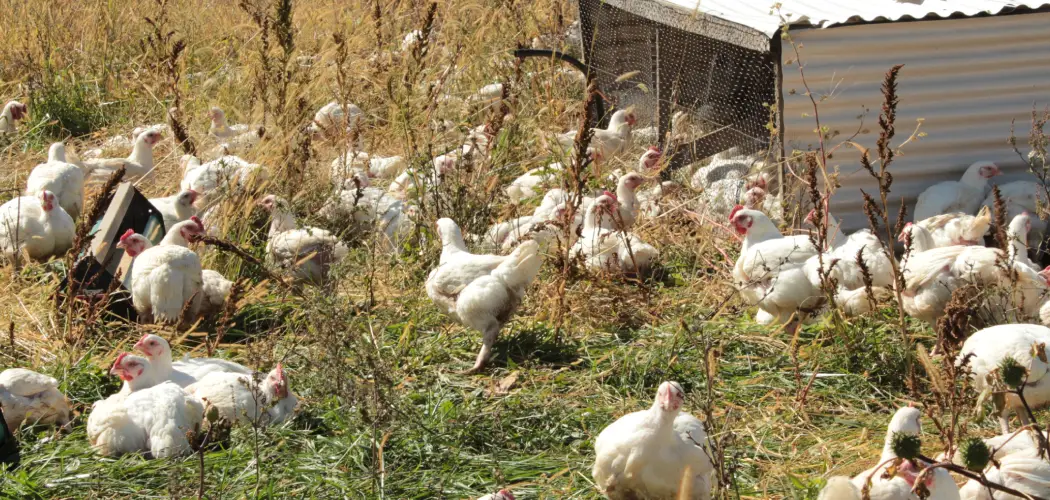Are you worried about how to keep chickens warm without electricity? Well, you have come to the right place.
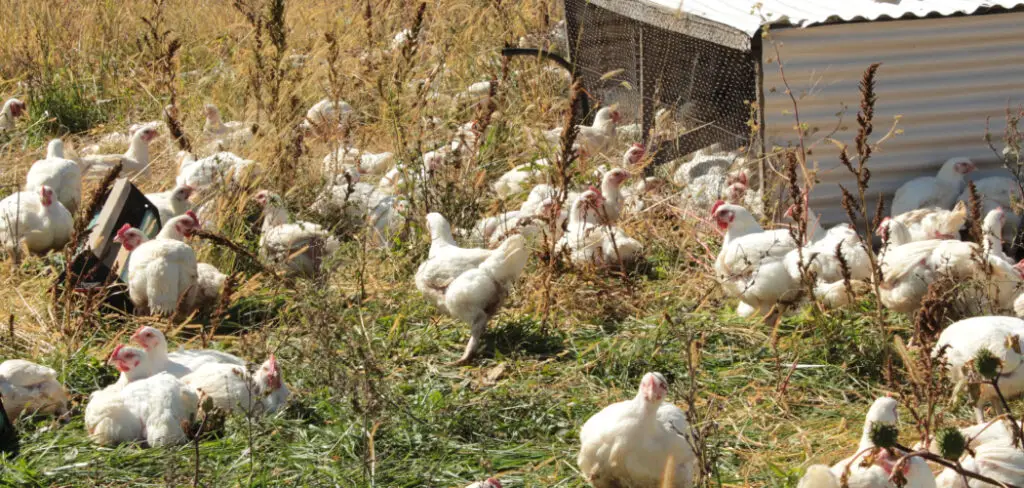
As winter approaches, keeping our feathered friends comfortable and warm becomes a top priority for chicken keepers. However, not everyone has the luxury of electricity-powered heaters to ensure their coop remains cozy during the colder months. Fortunately, effective, traditional methods can create a warm environment for chickens without relying on modern conveniences.
This guide will explore a variety of techniques to keep your chickens toasty and safe throughout the winter. It will use natural insulation methods, adjustments in coop design, and other electricity-free strategies to preserve warmth. Whether you’re seeking to reduce your carbon footprint or simply need to warm your coop off-grid, the following solutions will help maintain a suitable temperature for your flock’s well-being.
What are the Benefits of Keeping Chickens Warm Without Electricity?
You may want to consider keeping your chickens warm without electricity for several reasons.
- Cost-effectiveness: Traditional methods can save money on electricity bills and reduce the need for purchasing expensive heating equipment.
- Self-sustainability: By utilizing natural methods, you become less reliant on modern conveniences and can create a self-sufficient environment for your chickens.
- Reduced Fire Risk: Traditional heating methods are less likely to cause fires compared to electrical heaters, making them a safer option for your coop.
- Healthier Chickens: Keeping chickens warm without electricity can actually benefit their health. By relying on natural methods, you can create a healthier and more comfortable living space for your flock.
With these benefits in mind, let’s explore some effective ways to keep your chickens warm without electricity.
What Will You Need?
Before we dive into the techniques, it’s important to gather some essential materials that will help you keep your chickens warm without electricity. These include:
- Insulation Materials: This can include hay, straw, wood shavings, or other natural materials.
- Tarps or Plastic Sheeting: These can be used to cover openings in the coop and provide additional insulation.
- Thick Blankets or Towels: These can be used to cover the coop floor and provide warmth for your chickens to snuggle in.
- Heat-generating Materials: This can include heat lamps, hot water bottles, or even heated rocks.

Now that you have the necessary materials let’s explore some methods for keeping your chickens warm without electricity.
10 Easy Steps on How to Keep Chickens Warm Without Electricity
Step 1. Maximize Coop Insulation:
One of the most effective ways to keep warmth inside the chicken coop is by improving its insulation. Fill any cracks or gaps in the walls and roof with foam or silicone caulk.
Applying a thick layer of insulation materials like straw or hay along the coop’s interior walls can significantly reduce heat loss. This method traps air within the material, which then acts as a barrier against the cold, keeping the coop’s interior warmer for longer periods.
Step 2. Utilize Deep Litter Method:
The deep litter method is a great way to keep your chickens warm without electricity and promotes a healthier coop environment. By allowing bedding material (such as wood shavings, straws, or leaves) to accumulate over time, a composting process occurs.
This process generates heat, which can help raise the temperature of the coop. The deep litter method also encourages beneficial microbes that can break down waste and reduce odor. Remember to turn the bedding occasionally to aerate it, encouraging proper composting and maximizing the warmth produced.
Step 3. Block Drafts but Maintain Ventilation:
It is crucial to eliminate cold drafts in the chicken coop while preserving adequate ventilation. Drafts can significantly lower the temperature inside the coop, making it uncomfortable and potentially hazardous for chickens. Use tarps or plastic sheeting to cover any openings that might allow cold air to enter, particularly those located near the roosting area.
However, ensure there is still enough ventilation at the top of the coop to allow moisture and ammonia gases to escape. Proper ventilation prevents the air from becoming too humid, which is vital for preventing respiratory issues in chickens and maintaining a stable temperature inside the coop.
Step 4. Provide Warm Bedding:
Offering your chickens a cozy place to sleep can significantly impact their warmth. Deep, warm bedding like straw or hay gives chickens a place to burrow and conserve body heat.
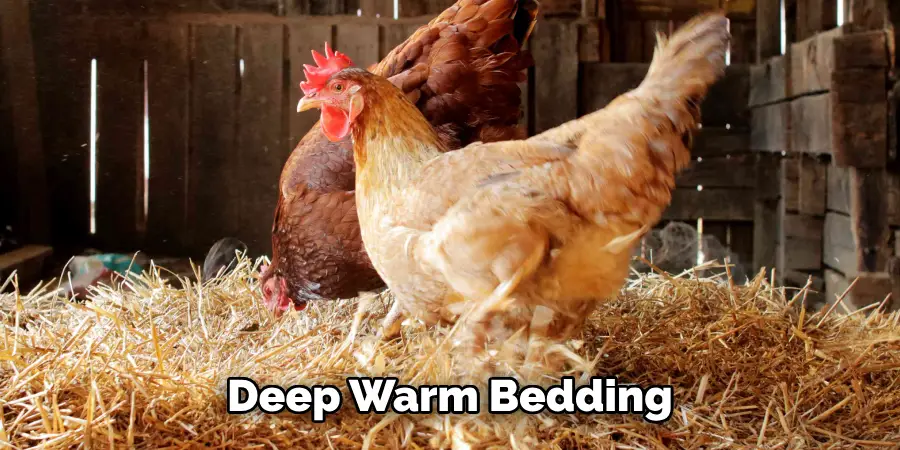
Ensure that the bedding is dry and clean, as damp bedding can lead to health issues like frostbite or respiratory problems. Replacing or adding to the bedding regularly will keep it fresh and improve insulation, helping to maintain a warmer environment inside the coop during the cold months.
Step 5. Use Sunlight to Your Advantage:
Capitalize on natural sunlight to warm the chicken coop during the day. Position the coop to receive ample sunlight, especially during the morning and midday. Windows can help to capture sunlight and naturally warm the interior. Consider using clear, heavy-duty plastic sheeting over windows or open areas to allow sunlight in while keeping the cold out.
The heat absorbed during the day can help keep the coop warmer for longer periods, even after the sun sets. Additionally, painting the coop in dark colors can aid in absorbing more heat, further enhancing this warming effect.
Step 6. Use Heated Rocks or Bricks:
A traditional but effective method to provide warmth without electricity involves using heated rocks or bricks. You can heat these objects in the sun during the day or in an oven if you have access to one, then place them in the coop when the temperature drops in the evening.
Wrap the heated items in towels to prevent burns and ensure they release heat slowly throughout the night. This method can create a warmth source for your chickens to huddle around, helping to maintain their body temperature during colder nights.
Step 7. Install Windbreaks Around the Coop:
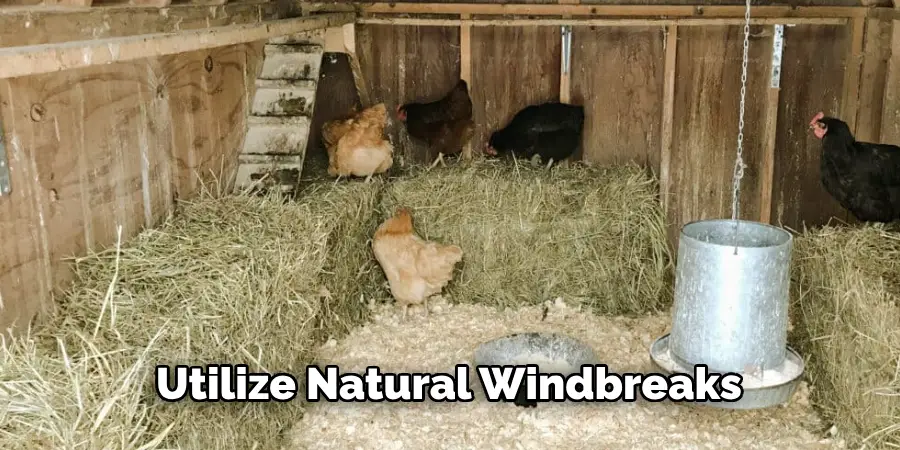
Creating barriers to block the wind can significantly reduce the chill factor around your chicken coop. Utilize natural windbreaks such as dense shrubbery trees, or even construct man-made barriers using fencing or bales of hay. These windbreaks can shield the coop from cold winds, thus lowering the risk of drafts entering through small openings.
Place them strategically around the coop, especially on the side facing the prevailing wind direction. This step can make a substantial difference in maintaining a warmer and more stable climate within the coop, providing additional protection against the cold for your chickens.
Step 8. Provide Warm Treats and Water:
Ensuring your chickens have access to warm treats and liquid water during cold periods can significantly impact their ability to stay warm. Feeding them corn or other grains in the evening can help raise their body temperature as they digest the food overnight.
Additionally, providing lukewarm water instead of ice-cold water can prevent lowering their body temperature when they drink. Use a water heater designed for livestock or place water containers inside a heated box to keep the water from freezing. Remember, adequate hydration is crucial for your chickens to maintain their health and warmth during winter.
Step 9. Group Chickens Together:
Encouraging your chickens to roost together during the colder nights is a natural way to utilize body heat efficiently. Chickens instinctively huddle for warmth, and by providing a roosting space that encourages this behavior, you can significantly reduce heat loss.
The communal warmth generated by the chickens can help maintain a more stable and comfortable temperature within the coop. Ensure the roosting area is not too spacious; a compact space will help retain heat more effectively but also ensure it’s large enough to prevent overcrowding and allow for proper ventilation.
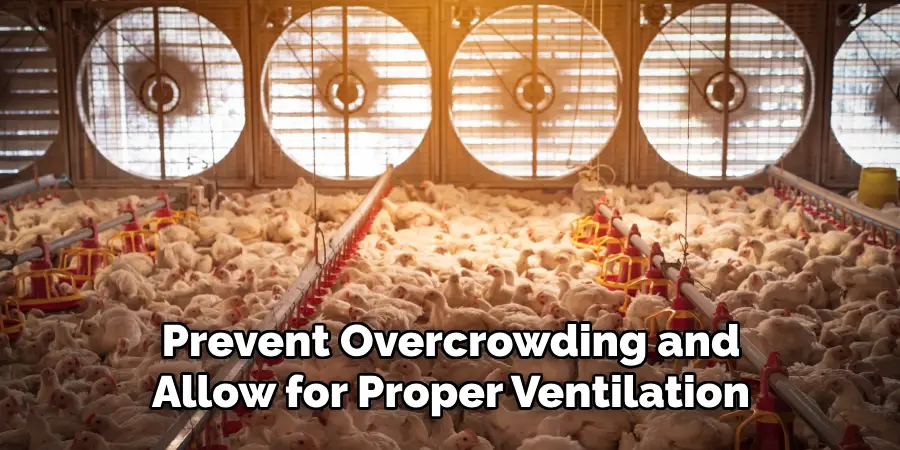
This step is crucial in ensuring your flock stays warm through the coldest parts of the winter without the need for electrical heating solutions.
Step 10. Monitor Chicken Health Regularly:
Maintaining a close eye on your chickens’ health during the cold months is vital for ensuring they cope well with the winter conditions. Look out for signs of distress, frostbite, or illness, such as changes in behavior, reluctance to eat, or unusual drooping.
Chickens’ combs and wattles are particularly susceptible to frostbite, so pay extra attention to these areas. Implementing preventive measures like applying petroleum jelly can offer some protection against the cold. Regular health checks allow for early detection and treatment of issues, minimizing discomfort and potential loss within your flock.
Ensuring your chickens remain healthy through the winter not only aids in their ability to withstand the cold, keeps egg production steady and maintains a harmonious coop environment.
By following these steps and implementing some winterizing techniques, you can keep your chickens warm and healthy through the colder months without relying on electricity.
5 Additional Tips and Tricks
1. Increase Coop Insulation: Improving the insulation of your chicken coop can significantly help retain heat and keep your chickens warm without electricity. You can use materials like straw, hay, or even recycled denim insulation to line the walls and roof of the coop for added warmth.
2. Use Deep Litter Method: The deep litter method involves regularly adding layers of bedding material to the floor of the coop throughout the winter season. This provides a cozy place for your chickens to nestle in and generates heat as the bedding decomposes. Just make sure to regularly clean out any wet or soiled areas to prevent health issues.
3. Utilize Heat Lamps Sparingly: While not entirely avoiding electricity, using heat lamps sparingly can provide a boost of warmth during especially cold nights. Be cautious and follow safety measures when using heat lamps to prevent any potential fire hazards.
4. Utilize Natural Sunlight: As mentioned earlier, utilizing natural sunlight can provide warmth for your chickens during the day. Make sure to position windows or openings in the coop to capture as much sunlight as possible and allow it to passively warm the coop’s interior.
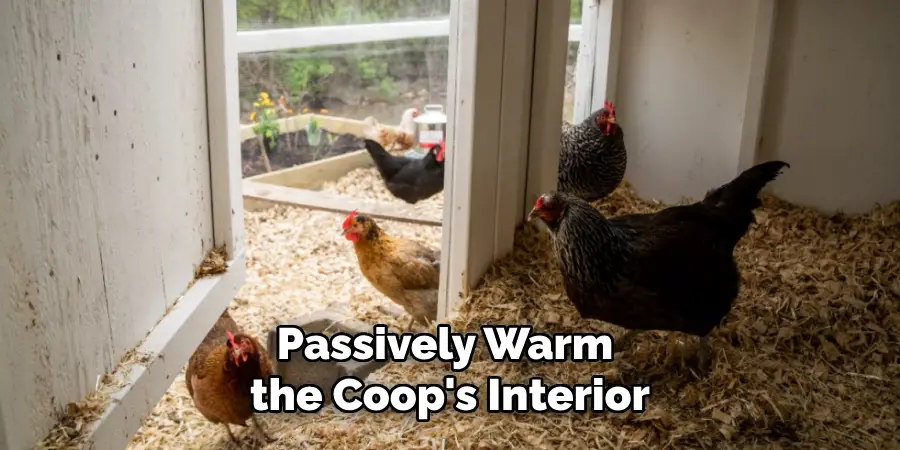
5. Consider Breeding Cold-Hardy Chickens: If you live in a region with harsh winters, it may be beneficial to consider breeding cold-hardy chicken breeds. Breeds like the Rhode Island Red or the Buff Orpington are known for their ability to withstand colder temperatures and can sustain themselves without added heat sources.
This approach may require some planning and research, but it can ultimately reduce your reliance on electricity to keep your chickens warm during the winter.
With a little creativity and proactive planning, you can keep your chickens warm and cozy without the use of electricity during the colder months.
5 Things You Should Avoid
1. Overcrowding the Coop: Avoid overcrowding your chicken coop in an attempt to keep your chickens warm. While it might seem like a good idea to keep them close for body warmth, too many chickens in a small space can lead to stress, aggression, and the spread of diseases.
2. Sealing the Coop Completely: Sealing off the coop to protect against predators can do more harm than good. Proper ventilation is crucial for the health and well-being of your chickens, as it helps to regulate temperature and prevent moisture buildup.
3. Neglecting Maintenance: It’s important to regularly clean and maintain your chicken coop to ensure a healthy living environment for your birds. Neglecting maintenance can lead to the buildup of harmful bacteria and parasites, which can cause health issues for your chickens.
4. Skipping Biosecurity Measures: Biosecurity measures are crucial for keeping your chickens healthy and preventing the spread of diseases. These measures include washing your hands before and after handling chickens, limiting visitors to your coop, and properly disinfecting equipment and materials.
5. Using Toxic Materials: When building or updating your chicken coop, it’s important to avoid using toxic materials that can be harmful to your chickens. This includes pressure-treated wood, which contains chemicals that can poison birds. Stick to natural, non-toxic materials for a safe and healthy coop environment.

With these tips in mind, you can ensure a happy and healthy flock of chickens in your coop.
Will Chickens Be OK Without Heat Lamp?
While providing a warm and cozy environment for your chickens during colder months is important, many chicken owners wonder if their birds can survive without a heat lamp. The answer is yes! Chickens are actually quite hardy animals and are well adapted to withstand cold temperatures.
In fact, too much heat can be detrimental to their health.
Chickens can overheat easily and can suffer from heat stress, which can lead to health issues and even death. Therefore, it’s important to monitor the temperature in your coop and make sure it doesn’t get too warm.
If you live in a particularly cold climate, there are other ways to keep your chickens warm without relying on a heat lamp.
Providing extra bedding, using insulated materials for your coop, and keeping your coop draft-free can all help keep your chickens warm and comfortable.
Remember, when it comes to raising chickens, it’s important to find a balance between providing a cozy environment and avoiding potential risks.
What is Warming Food for Chickens?
Warming food for chickens refers to certain types of feed or treats that can help increase body heat and keep your birds warm during colder months. This is especially important for older or weaker chickens with difficulty regulating their body temperature.
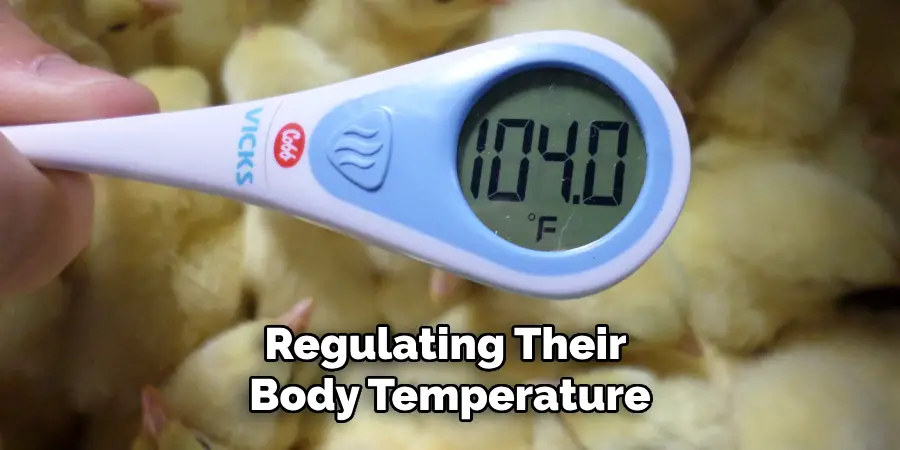
Some examples of warming foods for chickens include cracked corn, black oil sunflower seeds, and high-protein grains like oats or barley. These foods provide a good source of energy and can help to generate body heat when consumed by chickens.
However, it’s important to note that these foods should only be given as treats and not as a substitute for a balanced diet. Too much high-protein feed can actually lead to health issues in chickens, so moderation is key.
Additionally, providing plenty of fresh water for your chickens is crucial, as dehydration can lower their body temperature. Adding electrolytes to their water or offering warm water during cold weather can also help to keep them hydrated and promote warmth.
Overall, while warming food for chickens can be beneficial in colder temperatures, it’s important to always consult with a veterinarian or do thorough research before making any significant changes to your flock’s diet.
Conclusion
In conclusion, keeping chickens warm without the use of electricity is not only possible but can contribute to a more natural and stress-free environment for your flock.
By implementing strategies such as ensuring adequate coop insulation, preventing drafts, utilizing deep litter methodology, offering warming food treats in moderation, and observing your chickens for signs of discomfort, you can effectively maintain a comfortable temperature for your chickens during colder seasons.
Remember, the key to a healthy flock is not just about warmth but also about providing a clean, well-ventilated, and secure environment. By following these guidelines, you can help ensure your chickens stay warm through the winter months without relying on electric heating solutions, promoting their well-being and potentially reducing energy costs.
Hopefully, this guide on how to keep chickens warm without electricity has provided you with valuable insights and tips for keeping your chickens happy and healthy in any climate. Good luck!
You Can Check It Out to Keep Chickens Off Patio

